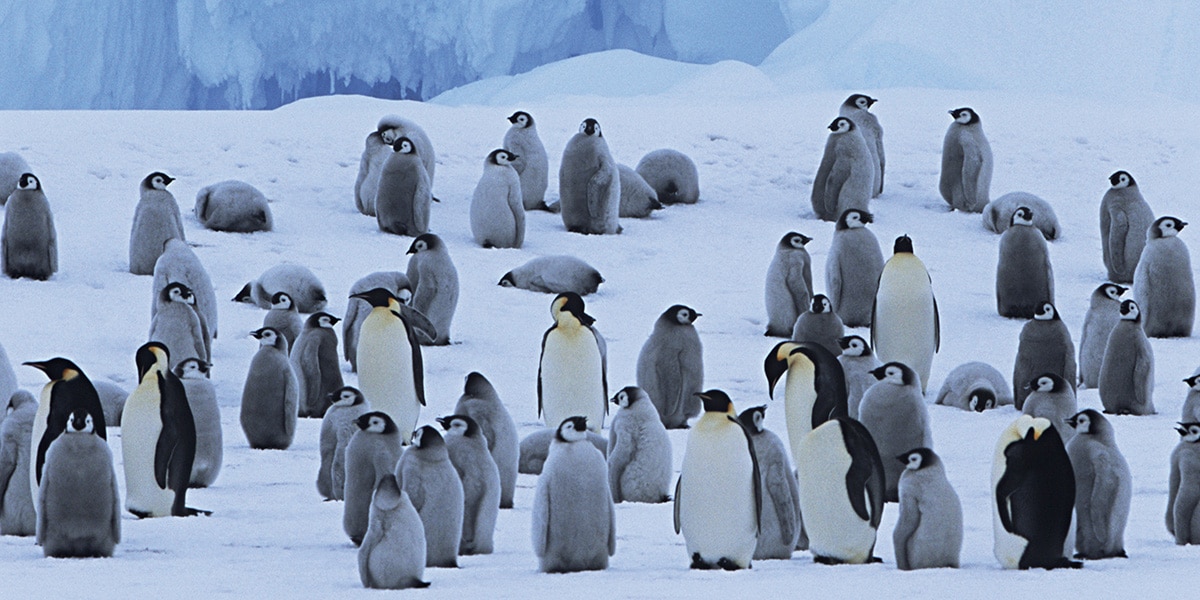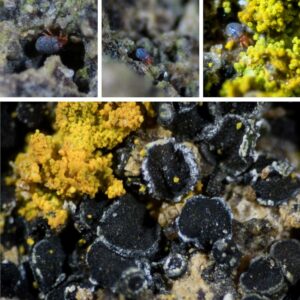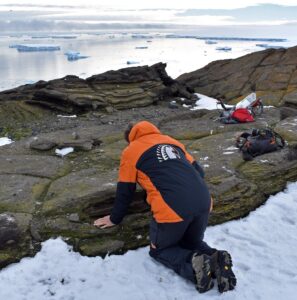


Brief description and intermediate results
Using powerful new genetic and computational approaches, this project aims at addressing a major, unresolved question in modern biology: how has life evolved and spread around the Antarctic region, both in the past and today?
 Mites crawling amongst-the collected lichens.
Mites crawling amongst-the collected lichens.
The Functional Biogeography of the Antarctic Project completed successful sampling in the 2016‐2017 Antarctic field season as part of the ACE Cruise. We collected material from across the sub‐Antarctic and Antarctica. This included rarely visited sites such as Mt Siple. We have discovered what seems to be new species of arthropods from Antarctica. For example, what is likely a new species of mite from Mt Siple. We also know that the geological age of sites and their conditions influence diversity. Older, warmer sites have more species. Colder, younger ones have less.
 DNA from the species collected in our samples is now being analysed using sophisticated modern approaches. We expect to show some remarkable, unanticipated connections of populations across the region. The plants and animals of these islands have moved around more extensively than we previously thought. For the alien species, our preliminary genetic work suggests that more species might have been introduced than previously recorded.
DNA from the species collected in our samples is now being analysed using sophisticated modern approaches. We expect to show some remarkable, unanticipated connections of populations across the region. The plants and animals of these islands have moved around more extensively than we previously thought. For the alien species, our preliminary genetic work suggests that more species might have been introduced than previously recorded.
 Steven L Chown
Steven L Chown
Monash University
Australia
Settling Decades of Debate:
A Dynamic, Functional Biogeography of the sub-Antarctic [/accordion][accordion title="Principal institution / country" ]
- Australian Antarctic Division (Australia)
- British Antarctic Survey, United Kingdom CSIRO (Australia)
- Department of Conservation, New Zealand
- National Institute for Agricultural Research, INRA (France)
- Moscow State Pedagogical University (Russian Federation)
- Muséum national d’Histoire naturelle (France)
- South Australian Museum (Australia)
- Université de Rennes 1 (France)
- University of Johannesburg (South Africa)
- University of Kentucky (USA)
- University of Queensland (Australia)
- University of Stellenbosch (South Africa)
- University of Waikato (New Zealand)
- Zool. Staatssammlung München (Germany)[/accordion][/accordionwrap]